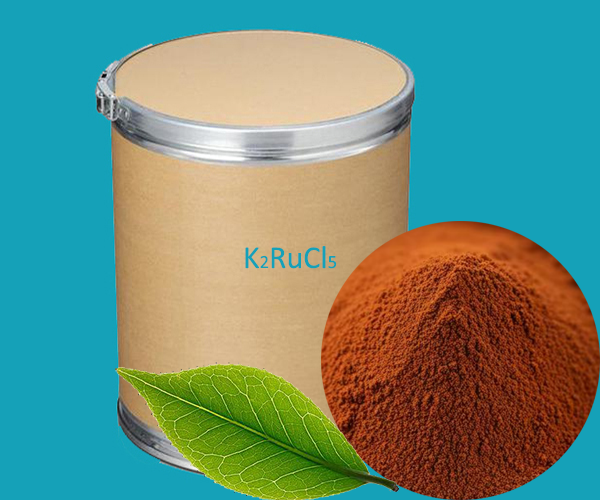Potassium chlororuthenate is a ruthenium-containing compound with the chemical formula K2RuCl5. This compound is usually found in the form of hydrated crystals and is an orange solid. Potassium chlororuthenate is an important inorganic compound that is widely used in catalysis, electrochemistry, materials science, and organic synthesis.
1. Catalyst: Potassium chlororuthenate is a highly efficient catalyst that is used in a variety of organic synthesis reactions, such as oxidation reactions, hydrogenation reactions, coupling reactions, and carbonylation reactions. It is commonly used in the pharmaceutical industry and fine chemicals for the production of pharmaceutical intermediates and other complex organic molecules.
2. Electrochemical applications: Potassium chlororuthenate can be used as an electrode material for electrochemical sensors and electrocatalytic water splitting. Its applications in the field of electrocatalysis include oxygen reduction reactions and hydroxide reactions, which are important for fuel cells and electrochemical sensors.
3. Materials Science: Potassium chlororuthenate can be used to prepare a variety of ruthenium-based materials, including nanomaterials, catalyst carriers, and electrocatalysts. These materials have potential applications in areas such as energy storage and conversion, environmental purification, and chemical sensors.
4. Analytical chemistry: Potassium chlororudateate can be used as an electroactive substance in electroanalytical chemistry for the construction of electrochemical sensors and electrochemical analysis.
5. Research and teaching: In chemical research, potassium chlororuthenate, as a compound of ruthenium, is often used as a model system to study the chemical properties and reaction mechanism of ruthenium. In chemistry education, it can also be used as part of a teaching experiment to help students understand transition metal chemistry.
 English
English Español
Español Português
Português Français
Français Deutsch
Deutsch Русский
Русский 中文
中文 日本語
日本語
